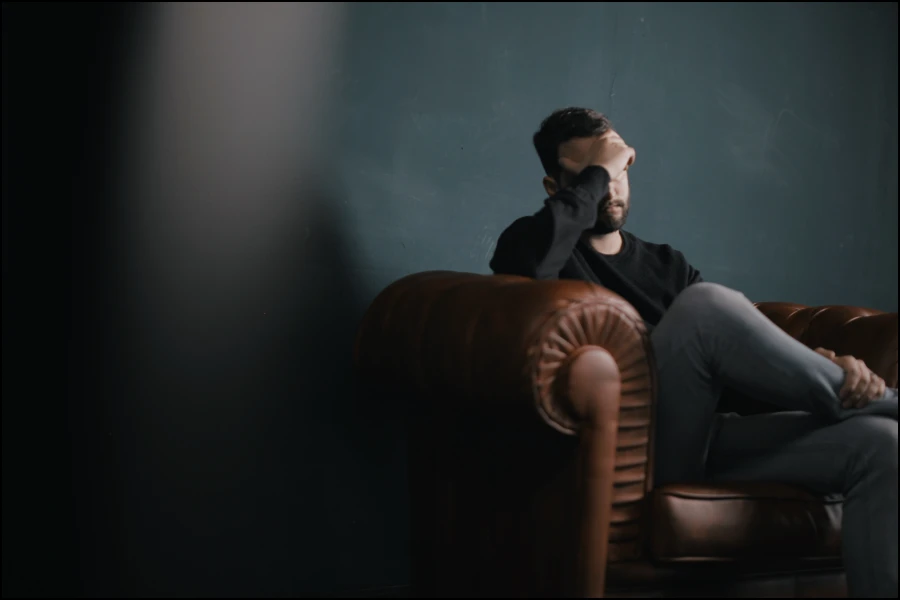Adjusting to stroke
- Aoife Hickey, Senior Clinical Psychologist
- 5 minute read
- Last updated: October 2023

Adjustment is a process of coming to terms with a change in your life, or returning to emotional balance after something happens.
There is no typical way of adjusting to stroke. It takes time, and some negative feelings are normal and expected. Understanding your stroke and focusing on what's within your control can help.
Positive adjustment

Positive adjustment means having a reasonable emotional balance, keeping up with your life roles and relationships as much as your recovery allows, and managing your health well. It does not mean that you never feel distressed. Some distress is normal and expected.
Poor adjustment can include distress that seems out of proportion or that gets in the way of rehab or daily life, not returning to life roles and relationships despite being able to, and poor health management (for example, an unhealthy lifestyle, not taking medications).
Adjustment can change over time and in response to lots of different things, including the usual ups and downs of life. Times of transition, such as finishing rehab, can often temporarily increase feelings of distress.

What helps?
Some things that can help positive adjustment include:
- accepting what’s happened
- having a sense of control over your health
- sticking to your medication and treatment regime
- keeping as active as your stroke allows
- feeling well supported by your family and friends
- solving problems directly
- having a healthy lifestyle
- feeling supported by professionals involved in your care
- being able to notice, accept and express emotion, including negative emotions

What can get in the way?
Some things that can get in the way of positive adjustment include:
- feeling very stressed
- seeing the stroke or other illness as catastrophic
- seeing yourself as helpless or the situation as hopeless
- trying to avoid emotions
- trying to cope with difficulties using avoidance
- reducing activity or too much resting, especially in the longer term.

What else influences adjustment?
There are many factors that can influence how well you adjust after a stroke.
Personal factors:
- personality traits, such as optimism
- early life experiences
- your values and goals
Social and environmental factors:
- housing
- finances
- support from relatives and friends
- support from services
Factors to do with the stroke itself:
- pain
- fatigue
- medical treatment
- the degree of disability or recovery
- uncertainty about the future
Tips to help you adjust
Learn about your type of stroke, where your stroke is and its effects.
People often find it helpful to know what caused their stroke and what steps will help reduce their risk of further strokes.
For people with lots of health issues, it can be important to understand what symptoms are because of the stroke and what symptoms are caused by another medical condition.
Know what medications you are taking and what they do.
Learning about your stroke will give you a greater sense of control and help you make and maintain changes.
A stroke usually means that you get lots of new responsibilities, such as taking medications or making lifestyle changes. You may have tasks to do to reduce your risk of further strokes, such as checking your blood pressure regularly.
These responsibilities take time and effort, and it can be hard to see their immediate benefits in terms of improved symptoms or wellbeing.
If you are struggling with your new responsibilities, think about what is getting in the way. It might be something simple and easily solved, like putting your medication on the counter where you will see it. However, it could be something bigger – if this is the case, you may need to ask for extra help.
Symptoms of depression and anxiety can get in the way of positive adjustment after stroke. If this applies to you, speak to your doctor or stroke team.
Taking a direct approach to solving problems (as opposed to avoiding problems) seems helpful. Ask yourself, “What's causing this feeling?”. There are five steps to actively solving problems:
- Define the problem. When does it happen? Where? Who is involved? Write the answers down. If there is more than one problem, separate them and deal with them individually.
- Generate as many solutions as you can think of. Even if solutions seem silly and unworkable, include them.
- Think about the implications of each of the solutions. What would be involved, exactly? Is it likely to be effective? What are the pros and cons of each?
- Choose the best solution and decide to act.
- Review what happened and weigh up whether the solution was effective. If it didn’t work out as planned, consider what you could do differently next time.
Supportive relationships with family, friends and health professionals often help you adjust and recover. After discharge, it can be difficult to find out what services or supports are available.
Your doctor or stroke team will be able to advise you on what's available. Sometimes people find it useful to meet others who have been through something similar. The Irish Heart Foundation can be very helpful in this regard.